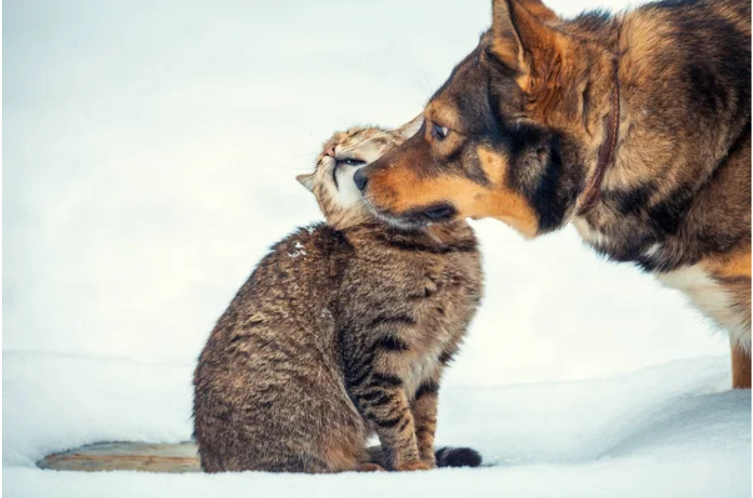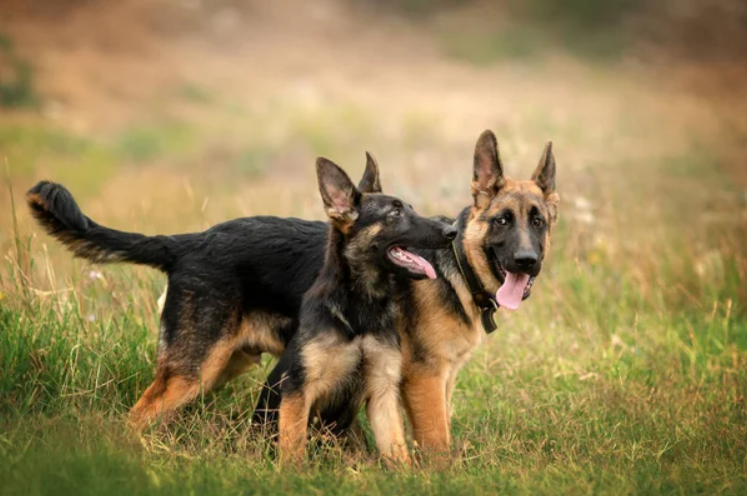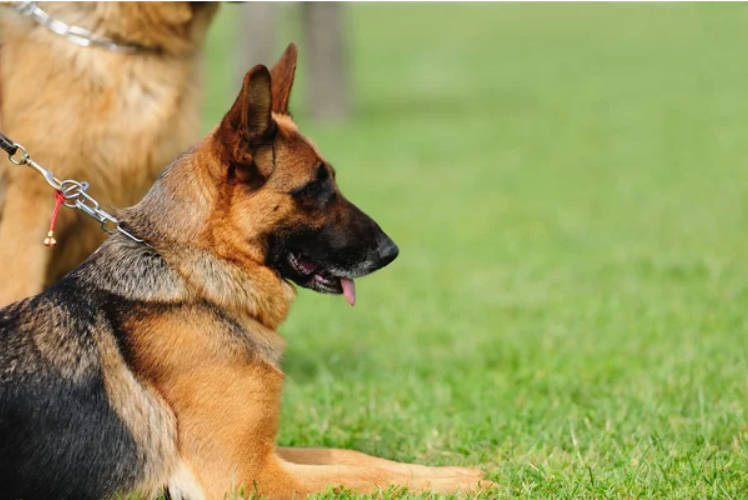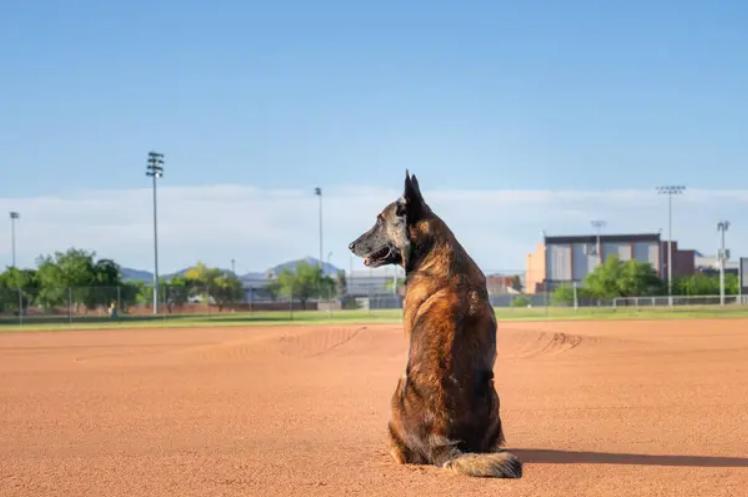As a personal protection dog owner, properly socializing your canine companion is one of the most important things you can do. Socialization is crucial for all dogs, but it’s especially critical for protective guard dogs who need to distinguish between real threats and everyday situations. This process ensures they are well-adjusted and reliable.
Learn the essential steps to effectively socialize your protection dog. Leveraging Scott’s K9’s expertise, this guide will help you ensure your dog becomes a well-adjusted, confident, and reliable partner, ready to handle any situation with poise and accuracy.
Why is Socialization Important for Protection Dogs?
Socialization is the process of exposing your dog to a wide variety of people, animals, environments, and experiences in a positive manner. This helps them develop into well-rounded, confident dogs that can handle different situations without fear or aggression. For protective guard dogs, socialization is particularly important because:
- It helps them differentiate between real threats and normal situations
- It prevents unnecessary aggression towards people or other animals
- It builds their confidence and resilience in various environments
- It strengthens the bond between the dog and their handler
When to Start Socializing Your Protection Dog
Ideally, socialization should begin during the critical socialization period, which is between 3 and 16 weeks of age. During this time, puppies are most receptive to new experiences and are less likely to develop fears. However, socialization should continue throughout your protection dog’s life to maintain their well-adjusted temperament. If you’re looking for a well-socialized and dependable companion, consider exploring protection trained dogs for sale to find the right fit for your family.
Read This Informative Article – Cost Of Owning A Trained Belgian Malinois Protection Dog
How to Introduce Your Protection Dog to New People
One of the key aspects of socialization is introducing your protection dog to a diverse range of people. This includes people of different ages, genders, ethnicities, and appearances. Here’s how to do it:
- Start with familiar people: Begin by having your dog meet people they already know, such as family members or close friends. Ensure these interactions are positive and rewarding for your protection dog.
- Gradually introduce new people: Once your dog is comfortable with familiar people, start introducing them to new individuals. Choose calm, dog-savvy people who understand how to interact with a protection dog.
- Use positive reinforcement: Reward your dog with treats and praise for calm, friendly behavior around new people. This will help them associate meeting new people with positive experiences.
- Don’t force interactions: If your protection dog seems uncomfortable or reluctant to approach someone, don’t force it. Allow them to approach at their own pace and never punish them for showing apprehension.
Introducing Your Protection Dog to Other Animals

Another important aspect of socialization is exposing your protection dog to other animals, particularly other dogs. Here’s how to go about it:
- Choose appropriate playmates: Select dogs that are friendly, well-socialized, and of a similar size and energy level to your protection dog.
- Start with on-leash introductions: Begin by having your protection dog meet other dogs while on a leash. Keep the interactions brief and positive, rewarding your dog for calm behavior.
- Progress to off-leash interactions: Once your protection dog is comfortable with on-leash meetings, you can progress to off-leash interactions in a secure, fenced area. Supervise the play closely and intervene if necessary.
- Introduce other animals gradually: After your protection dog is comfortable with other dogs, you can start introducing them to other animals, such as cats or horses, in a controlled and positive manner.
Exposing Your Protection Dog to Different Environments
Socialization also involves exposing your protection dog to a variety of environments and experiences. This can include:
- Different surfaces (grass, concrete, wood, etc.)
- Various weather conditions (rain, snow, wind, etc.)
- Urban and rural settings
- Public spaces (parks, streets, shopping centers, etc.)
- Transportation (cars, buses, trains, etc.)
Read More: IS THE BELGIAN MALINOIS A FAMILY-FRIENDLY DOG?
When introducing your protection dog to new environments:
- Start with less challenging settings: Begin with quieter, less stimulating environments and gradually progress to busier, more complex ones.
- Use positive reinforcement: Reward your protection dog for calm, confident behavior in new environments.
- Go at your protection dog’s pace: If your dog seems overwhelmed or anxious, take a step back and progress more slowly.
Handling and Grooming Socialization
Socialization also includes getting your protection dog comfortable with being handled and groomed. This is important for their overall health and well-being, as well as for building trust and strengthening your bond. Here’s how to approach it:
- Start early: Begin handling and grooming your protection dog from a young age, so they become accustomed to it.
- Make it positive: Use treats and praise to make handling and grooming a pleasant experience for your protection dog.
- Go slowly: Start with brief, gentle sessions and gradually increase the duration and intensity as your protection dog becomes more comfortable.
- Practice regularly: Consistent handling and grooming practice will help your protection dog stay comfortable and relaxed with these activities.
Socialization Tips and Best Practices
Here are some general tips and best practices to keep in mind when socializing your protective guard dog:
- Always supervise your guard dog during socialization experiences
- Never force your guard dog into situations they’re uncomfortable with
- Use positive reinforcement to encourage desired behaviors
- Be patient and go at your guard dog’s pace
- Continuously socialize your guard dog throughout their life
- Work with a professional trainer if you need guidance or support
The Role of Obedience Training in Socialization
Obedience training plays a crucial role in the socialization process for protective guard dogs. A well-trained guard dog is easier to control and more likely to respond to commands in various situations. Here’s how obedience training supports socialization:
- Teaches impulse control: Obedience training helps your guard dog learn to control their impulses and respond to your commands, even in exciting or distracting situations.
- Builds confidence: As your guard dog masters new skills and commands, their confidence grows, making them more comfortable in new environments and situations.
- Enhances communication: Obedience training strengthens the communication between you and your guard dog, allowing you to guide them through new experiences more effectively.
- Provides structure: A structured training program gives your guard dog a sense of predictability and security, which can help them feel more at ease in unfamiliar situations.
Socialization and Bite Work Training
For protection dogs, socialization should be balanced with appropriate bite work training. This training teaches the dog when it’s appropriate to use their protective instincts and how to do so safely and effectively. Here are some key considerations:
- Timing: Bite work training should begin after your protection dog has a strong foundation in obedience and has been well-socialized.
- Professional guidance: Always work with a qualified protection dog trainer who understands how to balance socialization and bite work training.
- Context-specific: Teach your protection dog that bite work is only appropriate in specific contexts, such as training sessions or real threat situations.
- Control: Ensure your protection dog understands that you are in control during bite work and that they must respond to your commands to engage or disengage.
Overcoming Socialization Challenges

Even with the best socialization efforts, some protection dogs may face challenges or setbacks. Here are some common issues and how to address them:
- Fear or anxiety: If your protection dog shows fear or anxiety in certain situations, take a step back and work on building their confidence through positive experiences at a pace they’re comfortable with.
- Aggression: If your protection dog displays aggression towards people or other animals, consult with a professional protection dog trainer immediately. They can help you identify the underlying cause and develop a plan to address the issue.
- Lack of focus: If your protection dog becomes easily distracted or overstimulated in new environments, work on strengthening their obedience skills and gradually increasing the level of distraction during training.
- Regression: Sometimes, protection dogs may regress in their socialization progress. This is normal and can be addressed by revisiting earlier stages of socialization and building back up slowly.
Ongoing Socialization and Maintenance
Socialization is not a one-time event but an ongoing process throughout your protection dog’s life. Regular exposure to new people, animals, environments, and experiences will help maintain their well-adjusted temperament. Here are some ways to continue socialization:
- Attend protection dog training classes or workshops
- Participate in dog sports or activities
- Visit new places and environments regularly
- Host social gatherings with friends and their dogs
- Enroll in continuing education programs for handlers
By making socialization a lifelong commitment, you’ll help your protection dog remain confident, adaptable, and well-behaved in any situation.
The Benefits of a Well-Socialized Protection Dog
A properly socialized protection dog is an invaluable partner, offering numerous benefits:
- Reliable protection: A well-socialized protection dog can be trusted to respond appropriately to real threats while remaining calm in everyday situations.
- Enhanced public safety: A protection dog that can distinguish between threats and normal interactions poses less risk to the public and is less likely to engage in unnecessary aggression.
- Stronger bond with the handler: The socialization process strengthens the bond between the protection dog and their handler, leading to better communication and teamwork.
- Increased versatility: A well-socialized protection dog can adapt to a wide range of environments and situations, making them a more versatile and effective working partner.
- Improved quality of life: Proper socialization contributes to a protection dog’s overall well-being, reducing stress and anxiety and allowing them to enjoy a fuller, happier life.
Can a Protection Dog Be a Family Pet?

One common question among prospective protection dog owners is whether these dogs can also be family-friendly guard dogs. The answer is yes, with proper training and socialization, trained protection dogs can make excellent family pets.
Here are some key factors to consider when integrating a protection dog into a family environment:
- Early socialization: Expose your protection dog to children, family members, and various household situations from a young age to help them develop a strong bond with the family.
- Obedience training: Ensure your protection dog has a solid foundation in obedience training, allowing you to maintain control and ensure their behavior is appropriate around family members.
- Supervision: Always supervise interactions between your protection dog and children, especially during the initial adjustment period.
- Education: Teach your family members, particularly children, how to interact with the protection dog respectfully and safely.
- Boundaries: Establish clear boundaries and rules for both the protection dog and family members to ensure a harmonious relationship.
With the right approach, trained protection dogs can provide both reliable security and loyal companionship to families. If you’re looking for a trusted companion, consider a trained German Shepherd for sale, as these dogs are known for their intelligence, loyalty, and protective instincts.
Conclusion
Socializing your protection dog is a critical aspect of their development and training. By exposing them to a wide range of people, animals, environments, and experiences in a positive manner, you’ll help them grow into confident, well-adjusted, and reliable partners.
Proper socialization benefits both you and your dog by ensuring they can handle various situations with confidence and poise. This process requires patience, consistency, and a commitment to positive reinforcement. Working with a qualified protection dog trainer enhances this journey, resulting in a family-friendly guard dog ready to protect and serve.
For expert guidance on socializing your protection dog, reach out to Scott’s K9. Contact us at (919) 939-6003 or email steve@scottsk9.com to ensure your protection dog receives the best training and support.
Frequently Asked Questions
How long does socialization take?
Socialization is an ongoing process that should continue throughout your protection dog’s life. However, the most critical socialization window is between 3 and 16 weeks of age.
What if my protection dog is older and hasn’t been socialized?
While it’s best to start socialization early, it’s never too late to begin. An older protection dog may take more time and patience, but with consistent positive experiences, they can still become well-socialized.
How do I know if my protection dog is uncomfortable in a situation?
Signs of discomfort can include cowering, tucking their tail, avoiding eye contact, yawning, licking their lips, or trying to move away from the situation.
What if my protection dog shows aggression during socialization?
If your protection dog displays any aggression, remove them from the situation immediately and consult with a professional protection dog trainer experienced in working with protective guard dogs.
Can I socialize my protection dog myself, or do I need a professional trainer?
While you can do much of the socialization yourself, working with a professional protection dog trainer can provide valuable guidance, support, and expertise, especially if you’re new to protection dog training.
